
Details Matter In a modern improvement, architect Robert Wilson selected fixtures and materials carefully to create a multifunctional space with a unified style. For example, a row of pendant fixtures over the kitchen not only acts as a visual punctuation mark, separating the workspace in the adjacent seating area, but also "injects a glow of bright however polished radiance," he says. Tile floors throughout the whole room retains the look easy and pulled-together.

Indoor-Outdoor Appeal Fantastic for casual weekend residing, this Hamptons beach-house dining/family area has a close connection into the kitchen, as well as to outdoor living spaces. Glass doors on the floor level slip all the way into the walls, opening the family/dining space and living area to an expansive deck space. The rooms could be entirely open or protected from mosquitoes using a screen system, allowing for summertime breezes, ample interesting areas and restoring connections to nature. "A consistent -- but not overwhelming -- thread of gloomy follows throughout these ground-level spaces: gloomy kitchen cabinets, blue custom made carpet and touches of blue partitions," note the architects.
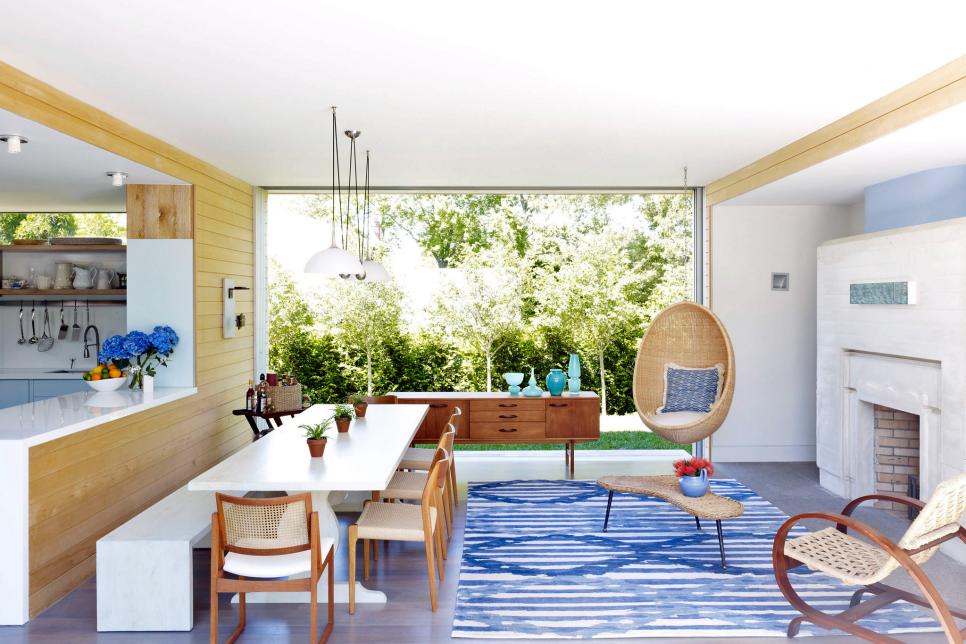
Unifying Design Within an open-plan concept, designers try not just to create separate zones inside one big space but to make the end result feel cohesive. In this home, the designers in Carlton Architecture DesignBuild did both with finesse. "We split individual spaces with furniture groupings and circulation. Common materials such as steel, rift-sawn white oak cabinetry, and dark stained walnut flooring are used to unite the three regions," they describe.
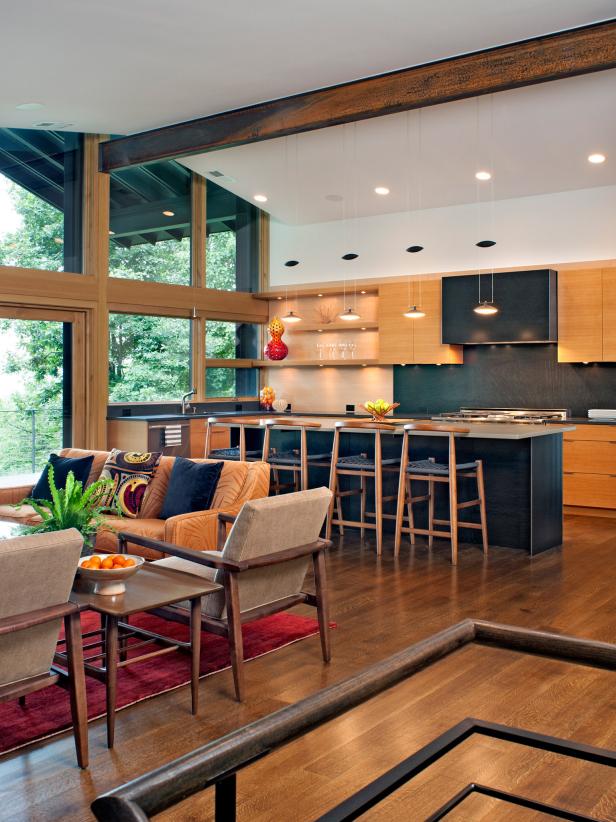
Let There Be Light Large glass sliding doors with clerestory windows above stretch across the entire rear elevation of this open-plan space, maximizing daylight in the kitchen, living, dining and study areas. "Light cascading through by the rear of the house brings an airy and refreshing feeling, making a fun space to entertain family and friends," says architect Robert Wilson.

Cozy Character For a family house in Houston, the designers of Laura U Interior Design created a comfortable seating area just off the kitchen. The team used accessories and color to make a cohesive look throughout the broad open place. "While the majority of the colour palette is neutral, we weave a vibrant turquoise through each room: pillows and an area rug from the family area, bar stool frames in the kitchen plus a show-stopping chandelier at the breakfast space," they explain. "The entire space is further merged through the window remedies that are a blend of both Hunter Douglas Silhouette shades and custom drapery using a turquoise band on the leading edge. A bright yellow and only a dab of orange set off the colour scheme while bits of gold and a natural timber (teak root table and driftwood at the island) add eclectic charm."
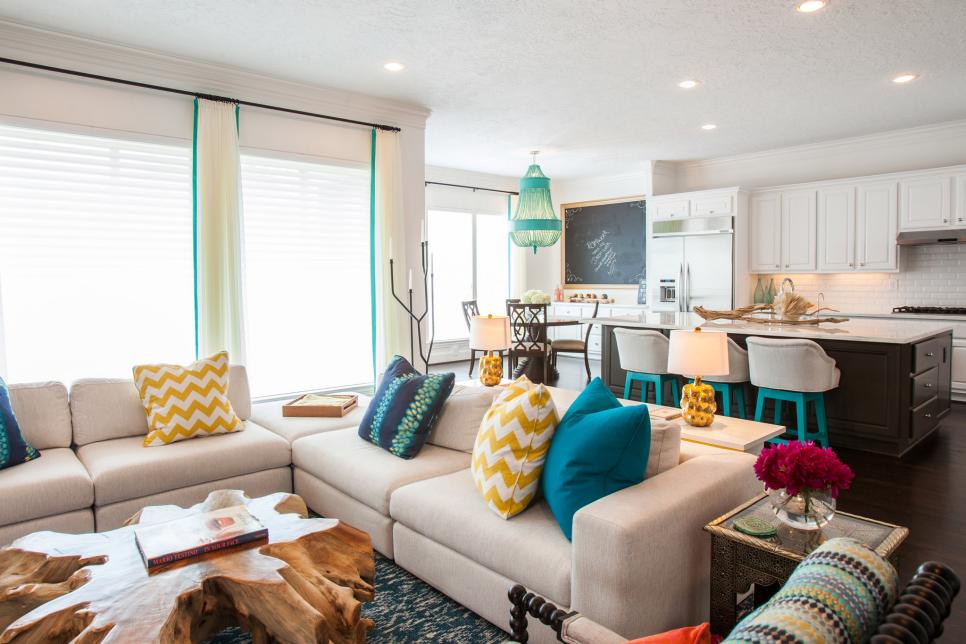
Attic Living Although this open-concept kitchen and dining area is in a loft -- at a converted tote mill in Nashville -- the fundamentals designer Jason Arnold followed will operate in almost any setting. He states: "The kitchen is opposite the living room, in a large, open area that automatically lends itself to entertaining and family living. We painted the walls, trim and cabinets exactly the exact same soft gray to create the spaces feel as one. Because it's basically a massive room with a kitchen at one end, I wanted the kitchen to blend seamlessly into the area that's the reason why there are no upper cabinets. Instead, there is a big pantry armoire into the right. The dining table acts as the visual separation from kitchen to living."

Twice as Nice Designing a home for one family can be challenging, but designing a house to be shared with 2 brothers' families? That is another suggestion entirely -- and one architect Matthew Collins of all Uptic Studios fulfilled with the help of an open layout. "The goal of the project was to create a contemporary log cabin on Coeur D'Alene Lake in North Idaho," he clarifies. "Uptic Studios believed the combined occupancy of two households, supplying separate spaces for privacy and common rooms which bring everyone together comfortably under one roof. And we not only had to take into account the space itself, but also all of the individuals who'd be living there. One of the brothers is a chef, so we kept in mind when designing the kitchen and living area. We made sure to make a common room just off the kitchen to bring everyone together. A delicate balance of natural substances and custom conveniences fill the interior spaces with magnificent views of the lake from almost every angle."

Going With the Flow To get a family home, open, flowing spaces provide plenty of room for together-time, without anyone feeling cramped. "Large bi-fold doors in the kitchen and living area lead onto a landscaped garden making the ideal link from inside to outside for this family," states architect Robert Wilson. "The glass doors ensure natural daylight reflects though the dwelling room round the polished floors, creating a wonderfully bright space"

Divide Conquer Creating different zones inside an open layout is simple, but making them feel at once different and connected could be more complicated, states designer Jodie Cooper. Here, she handles this delicate equilibrium, using fabric -- a transition from the practical kitchen flooring to the warm wood in the dining space -- and color: A soft blue-green accent wall helps differentiate (and add drama to) the dining area.
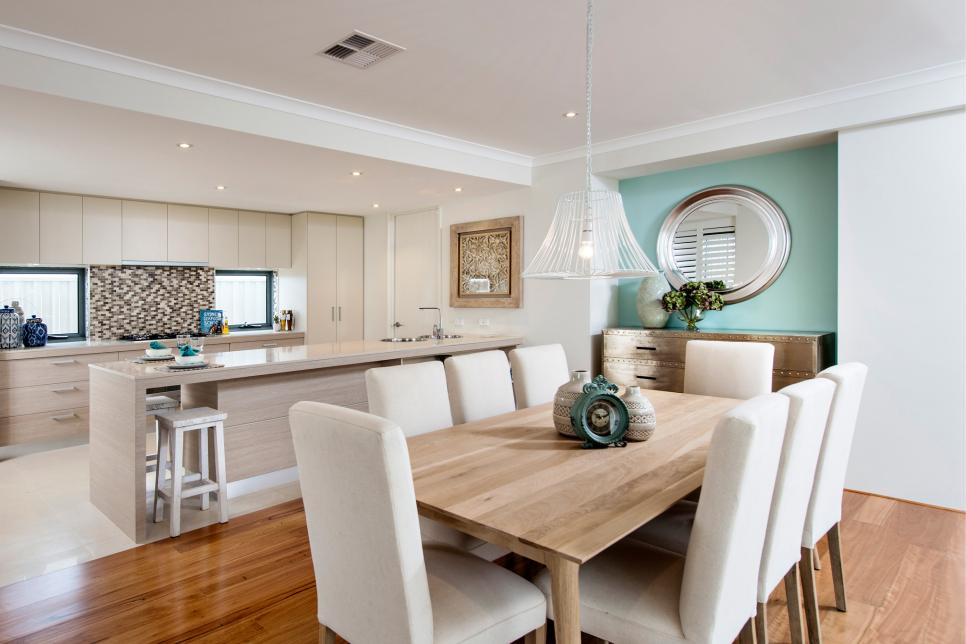
Family Friendly For a household with three boys under the age of 12, a sprawling family center that opens out into the backyard was just the ticket. "An open-plan living space made sense to them since they really wanted an area that would be the 'heart' of the house and in which they can all gather together and interact, even if they are doing different tasks," says designer Nelly Reffet of Twinkle & Whistle Interior Design. To give the room an inviting texture, Reffet took care together with her choices of colour and substance. "One of the probable downsides of open-plan alive, especially in contemporary homes, is the room may feel somewhat cold and impersonal," she states. "Using 'warm' or earthy substances and/or colors, as well as a mixture of textures is a fantastic way to attain equilibrium, and to produce a more lived-in space"
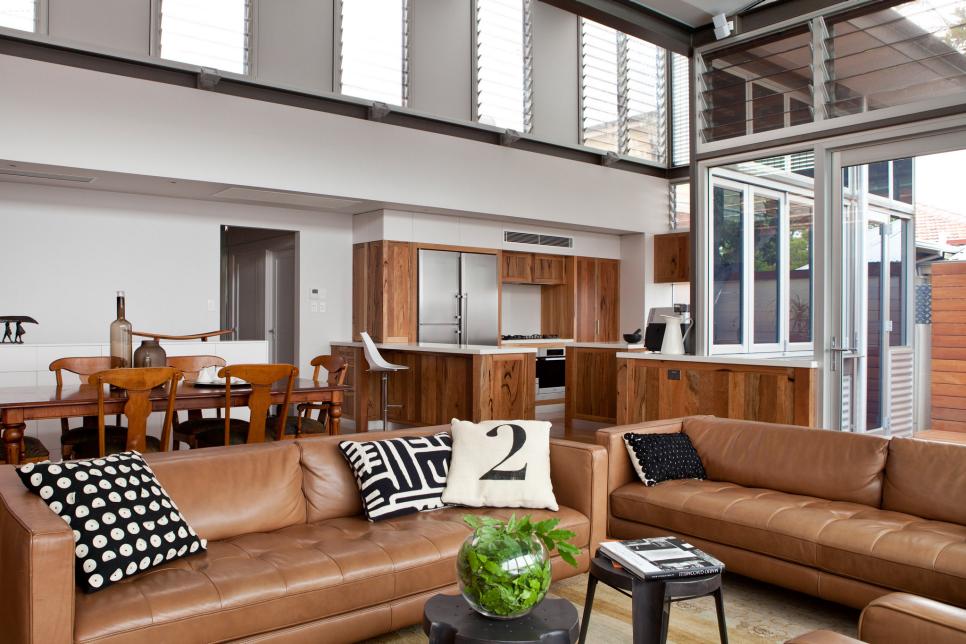
Natural Approach For a house set within a historical woodland and heath in the New Forest National Park, designer Wendy Perring of PAD Studio took care to make the most of connection between the home and its surroundings, while minimizing the effects of the construction on the website. "The main living area is open-plan and designed to appeal not just to the changing physical needs of its occupants but also to provide nourishment and stimulation to the soul through close contact with the house's natural setting," states Perring.

Scaling Up In a large, open interior -- and this is particularly important once the area has towering ceilings -- it is crucial to select details and furnishings that fit the massive scale of this space. Says stylist Sophie Gunnersen of Studio Stamp: "All the bits in the room are somewhat big and bold, and everything has a purpose. The custom-made dining table sits at bar height and can be big and chunky. The black AGA cooker is really the key part in the space -- it adds ambience and brings most people with its warmth. The vertical bookshelf along with the green tiles divide the room."

All Grown Up Open-plan living can operate on almost any scale. Case in point: This stylish home Uptic Studios constructed for a retiree. "After living on the family farm for decades, our client was ready to move into city to be closer to her children and grandchildren," say the architects. "Always the entertainer, she requested an open great space to accommodate dinner parties, as well as loads of shelf and wall space for family photographs and various mementos."

From Little to Broad Combining two or more spaces can create a feeling of flow which makes every individual room seem larger. Case in point: A tight galley kitchen which got a fresh lease on life because of some smart reconfiguration. The architect recaps the project: "Knocking out the wall of a connected storage unit transformed the dark and cramped kitchen into a clean and light-filled space complete with a dining area and backyard view. A galley layout makes effective use of the small kitchen and allows for plenty of worktop space. The kitchen walkway leads the attention on the dining room -- which has the exact same diameter as the kitchen and the garden end of the space."

No comments:
Post a Comment